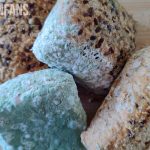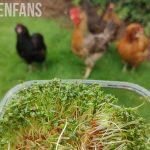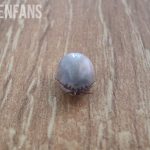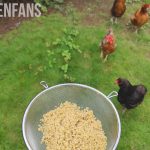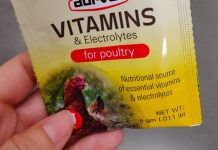7 Health Benefits of Butternut Squash for Chickens
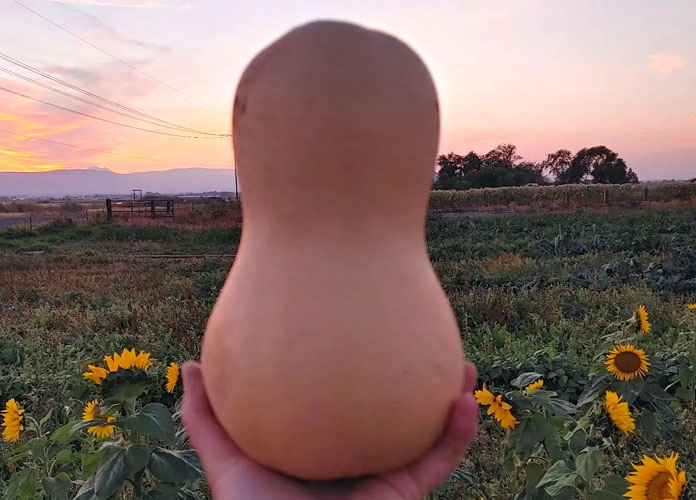
Butternut squash is a winter squash that grows on a vine. It has a sweet, nutty taste that’s very similar to a pumpkin. Butternuts are 85% water, low in calories, and loaded with plenty of micronutrients.
Chickens can eat all parts of pumpkins and butternut pumpkins. They are nutritional powerhouses for chickens.
Just take a quick glance at all the vitamins in butternuts and compare them with the optimal daily value of laying hens:
| 100g Raw Butternut | Amount | % DV Laying Hen |
|---|---|---|
| Calories | 45 kcal | ~15 % |
| Water | 91,6 g | – |
| Protein | 1 g | ~5 % |
| Carbs | 11,7 g | – |
| Sugar | 2,2 g | ~7 % |
| Vitamin A | 10600 IU | ~350 % |
| Vitamin C | 21 mg | ~20% |
| Vitamin B6 | 16 µg | ~2% |
| Pantothenic acid (Vit B5) | 0,4 mg | ~ 4% |
| Folate (Vit B9) | 16 µg | ~1,5% |
| Vitamin E | 1,06 g | ~8% |
| Panthothenic Acid | 0,298 mg | ~3% |
| Potassium | 352 mg | – |
A small cup of 100g butternut pumpkin cubes provides more than 300% of the daily recommended value of vitamin A. Chickens can eat several types of pumpkins, but the butternut takes the cake here.
Technically, vitamin A is fat-soluble and is only found in animal fat. A butternut pumpkin contains beta carotene, which the chicken’s body turns into vitamin A after eating.
1. Boosts Eyesight
Vitamin A has several functions in the chicken’s body, but its effect on eyesight is the most well-known. It prevents night blindness and helps your chicken see in dim lights. Chickens can’t just turn on the lights and rely heavily on their vision in the coop when the night falls.
The vitamin helps to keep the cornea clear, the front of the eye that catches the light. It’s also vital for the proteins in a chicken’s eye that allow them to see in low light conditions.
2. Prevents Blood Spots in the Egg
Already since mid 20th century, farmers knew that a minimum supplementation of 3520 IU vitamin A per kilogram reduced blood spots and meat spots in the egg. Blood spots result from burst blood vessels in the ovary of a chicken. Meat spots are small pieces of the internal lining of the oviduct.
As it turns out, vitamins A and D are crucial for developing and maintaining epithelial tissue. This is the tissue that surfaces the inside of the organs and intestines. It’s the first line of defense against viruses, parasites, and bacteria. Any damage to the epithelial cells of the internal linings can result in blood and meat spots in the egg yolk and whites.
You reduce the risk of blood spots and meat spots in the egg by providing your chickens with butternuts and plenty of sunlight (for vitamin D).
3. Reduces Stress
The vitamin complex in butternut pumpkins reduces stress in chickens. Stress can cause all kinds of health issues, delayed egg laying, and a weakened immune system.
Some stressful situations are:
- it can be off-putting to join a new flock
- a lack of space can cause excitation
- hot temperatures can cause heat stress
- the flock is coping with an aggressive rooster
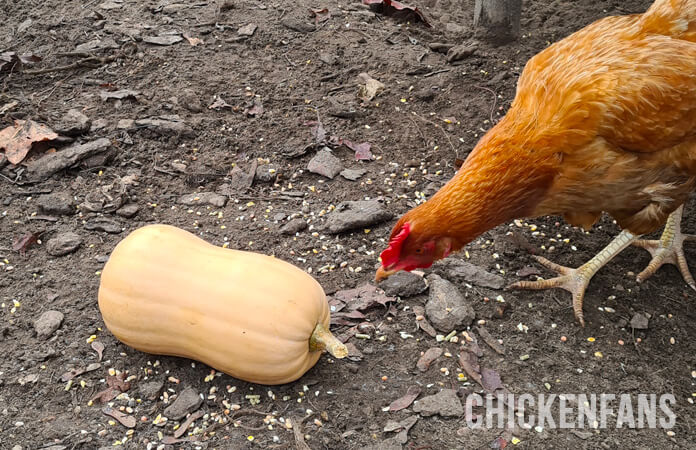
Vitamin A in butternut has an anti-stress effect. It prevents the chicken’s body from creating ultra-fast sugars in fight-or-flight situations. It calms the birds down by tempering the adrenaline rush.
Butternut also contains vitamin C, which helps to reduce stress levels and anxiety. The antioxidants in butternut regulate cortisol, the stress hormone.
4. Boosts the Immune System
Butternut pumpkins are rich in beta-carotene and vitamin C, both antioxidants that protect against internal damage from free radicals.
The butternut is an excellent source of vitamin A, containing more than 300% of the daily value. Vitamin A plays a central role in the immune response of chickens and young chickens. Any vitamin A deficiencies make chickens prone to E. coli infections (Friedman ad Skan, 1989).
For broilers, higher levels of vitamin A are needed to max out the body’s immune response. The butternut is a perfect treat for larger breeds and meat chickens.
5. Improves Egg Laying Performance
Butternuts are full of micronutrients that will guarantee optimal egg laying. Vitamins A, C, and E deficiency can cause egg production drops. That’s why the poultry industry uses vitamin supplementation in the chicken’s diet to ensure optimal production.
Feeding butternut will not suddenly turn a Silkie into an egg-laying machine, but it can certainly help them from running into vitamin A, C, and E deficiencies.
6. Boosts the Vitamins in the Egg
The vitamin boost of feeding butternut to chickens results in extra vitamins in the eggs they lay. Scientists found that adding extra vitamins to the chicken’s diet results in healthier eggs.
This is especially important in developing countries, where vitamin A deficiency causes death and blindness among children. In these countries, eggs are an important source of vitamins.
Adding butternut to the chicken’s diet can fortify the eggs and combat all these diseases.
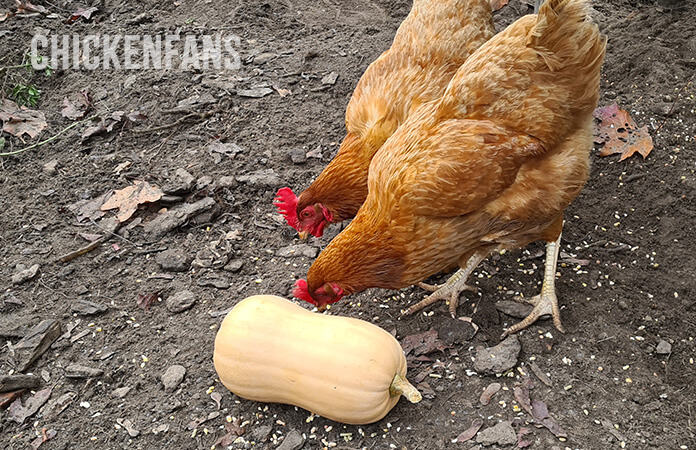
7. It keeps the Flock Hydrated
Butternuts are 90% water. When the chickens are done picking the seeds, they gobble up the flesh of the butternut. This provides them with plenty of water.
Chickens need water for proper digestion and for the organs to do their job. Water is also essential to regulate their body temperature, and it’s a refreshing treat when it’s hot outside. On top of that, the electrolytes in butternut allow them to cool down from heat stress.
Risk of Overfeeding
With all the health benefits, you might be tempted to go all in on butternuts. However, there is one risk in overfeeding butternuts to your chicken.
Butternuts provide extreme amounts of vitamin A. This vitamin is a fat-soluble vitamin, which means it’s stored in fatty tissue and in the liver. However, the storage capacity is limited. If all the spots are taken by vitamin A, there is no space left for other fat-soluble vitamins, such as C, E, and vitamin K.
Vitamin A can also interact with other vitamins and nutrients. There is a clear interaction with vitamin E.
So while butternuts are certainly a healthy treat for chickens, you can’t go willy-nilly and replace their regular food with an overload of butternuts.
Other Reads
Other pumpkin articles:
Other squashes:
- Why every chicken should eat cucumbers
- Why zucchini is an ideal treat for chickens in the summer
Some scraps you can’t give chickens that are sometimes served with butternut:
If you want to learn more about chicken feed, please consult our ‘Chicken Food Page‘ to go and see every specific food article we address, including all articles on what chickens can and can not eat. Or go to our listicle food summary on ‘The Classroom‘.
Credits Featured Image: @redbirdranch (IG)
